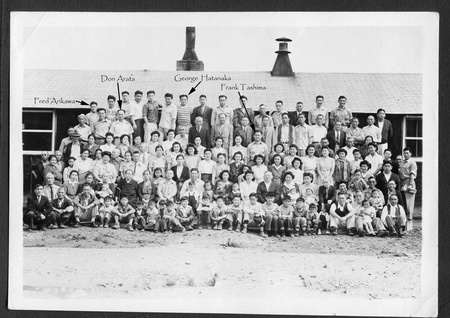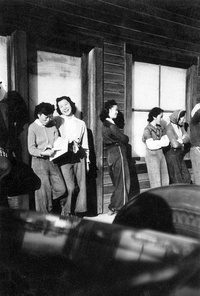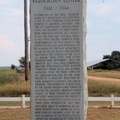14-8-C…
A few years ago, this series of numbers and a letter were meaningless to me. Then I happened to find my father’s photo album that contain scenes stretching from his childhood in Japan to camp in Arkansas and Arizona and back to Japan where he married my mother in the 1950s.
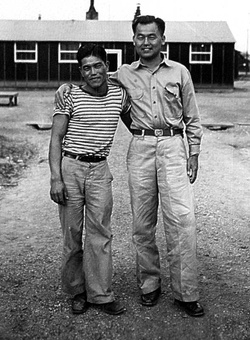
A picture of Frank Tashima (on the right) and my father "Fred" Mitsuru Arikawa taken in Jerome about 1943
I don’t think that my brothers, sister, or I had seen any of these pictures and my father rarely spoke of his life before kids except for a typical aphorism—“You kids have it easy, when I was going to school, I had to ride my bike in the snow uphill.”
My father was a migrant worker before the War. He was in Guadalupe, California in 1942, away from the rest of his family in Fresno. He returned to Fresno to rejoin the rest of his family only to be sent to the Fresno Assembly Center before being sent to Jerome in October 1942. It was in camp that he formed friendships that survived for decades afterwards. Many of his friends that I knew growing up he first met in camp.
Among the pictures, there is the group shot taken at Jerome. You can see the tarpaper walls on the barracks in the background. I scanned and enlarged the photo to see dad toward the back on the left. In the back row is George Hatanaka, who would eventually marry into our extended family after the War. I see Don Arata also. Don repaired televisions and electronics in a workshop next to his house, which just around the corner from my dad’s grocery store in Fresno. Don met his future wife and married while in camp before being released to work in the Midwest. In the middle of the group, standing tall, is Frank Tashima, who also married while in camp. There is another picture of my father and Frank showing how tall Frank was compared to my father.
My father talked little of his time in camp. He mentioned the “No No Boys” once. He also once said that camp wasn’t bad; he didn’t have to worry about finding a place to sleep or about where he would get his next meal. I remember that when my oldest cousin, who was in Jerome also, heard that he raised his voice in a mild protest, “I don’t know about that, Fred.”
I used to wonder where my father learned the Hawaiian slang “mo’ better.” Recently, I learned that there probably was a connection to Jerome; a number of Japanese Americans from Hawaii were also incarcerated in Jerome.

A photo of my daughter, Liz, and me taken in SF Japantown during the filming of Infinity and Chashu Ramen
My teenage daughter, who hasn’t experienced racial prejudice in her life yet, gets indignant at the thought of the camps. She’s asked me how people could do that to other people just because they look different. Typically shy, during the Q&A session after the showing of Rabbit in the Moon at the Nihonmachi Film Retrospective, she asked Chizu and Emiko Omori why high school history books have so little on the camps and the Japanese American experience. She is even writing a history term paper on the Japanese American experience in the camps. Where this comes from, I don’t know, but she has always noticed inconsistencies between people’s words and their actions.
I hope to take her to see Manzanar, where my maternal grandfather was incarcerated, sometime soon. It’s been some thirty years since I visited Manzanar. At that time there wasn’t much there, but in recent years there has been a flurry of restoration activity there and some of the other former camp sites. I’d like take her to visit Jerome, too, but, unlike the sites closer to the West Coast, there has been no restoration of the site.
Jerome is somewhere in southeastern Arkansas not far from the Mississippi River. It must be a pretty obscure place; a friend from Arkansas once told me that he had never heard of the place. All that identifies the site now is a monument marker just off Highway 165 north of Jerome. Thanks to Google Maps, I can see a fuzzy image of that marker and maybe even the remnants of the sewage treatment plant.
I think that the camp had 50 blocks, which brings me back to 14-8-C (Block 14, Barracks 8, Apartment C), my father’s address at Jerome. I wonder what it was like to live in a barracks with tarpaper exterior walls, to share a barracks with someone you didn’t know, to have to use a communal bathroom and to eat in a dining hall. It almost sounds like a college dorm, except with barbed wire and towers with armed guards; your basic needs, except freedom, taken care of.
How did he spend his days? Did he work at hard labor clearing away the forest, in the kitchen, in the dining hall, as a carpenter, or as a janitor? I have pictures of him driving a tractor and a truck, so maybe he worked on the camp farm. I’m in the process of ordering his War Relocation Authority records, so maybe those papers will reveal those secrets.
I hope that the site will be restored to show the site’s history and be used to help educate Americans about the results of intolerance and antiracial hysteria. I wonder how my daughter and I will feel standing on the site. Will we feel the ghosts of that past time, of the people who died there, labored there, and were born there?
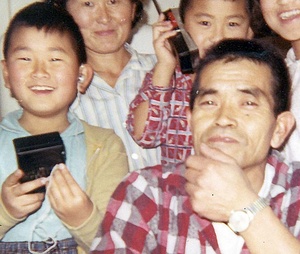
A picture taken by my brother, Jin, on Christmas day 1966. From left to right, me, my mother, Michiko, my little brother, Kelly and my father
* This article originally appeared in the 2011 Holiday Issue of Pacific Citizen, an award-winning Asian Pacific American semi-monthly newspaper.
* All photos are courtesy of Ben Arikawa.
© 2011 Ben Arikawa


